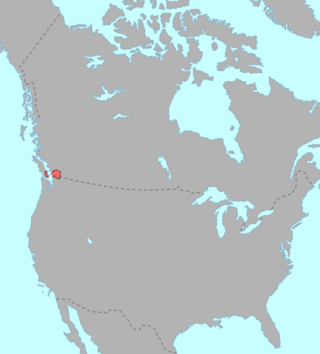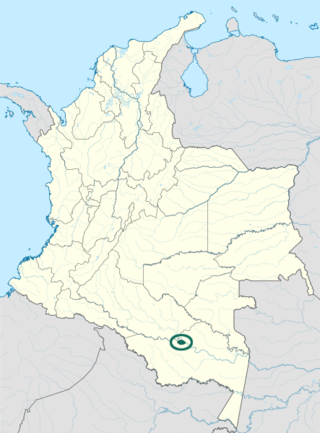
Zarma is one of the Songhay languages. It is the leading indigenous language of the southwestern lobe of the West African nation of Niger, where the Niger River flows and the capital city, Niamey, is located. Zarma is the second-most common language in the country, after Hausa, which is spoken in south-central Niger. With over 2 million speakers, Zarma is easily the most widely spoken Songhay language.

Tzotzil is a Maya language spoken by the indigenous Tzotzil Maya people in the Mexican state of Chiapas. Most speakers are bilingual in Spanish as a second language. In Central Chiapas, some primary schools and a secondary school are taught in Tzotzil. Tzeltal is the most closely related language to Tzotzil and together they form a Tzeltalan sub-branch of the Mayan language family. Tzeltal, Tzotzil and Chʼol are the most widely spoken languages in Chiapas besides Spanish.
Yaqui, locally known as Yoeme or Yoem Noki, is a Native American language of the Uto-Aztecan family. It is spoken by about 20,000 Yaqui people, in the Mexican state of Sonora and across the border in Arizona in the United States. It is partially intelligible with the Mayo language, also spoken in Sonora, and together they are called Cahitan languages.

Halkomelem is a language of various First Nations peoples of the British Columbia Coast. It is spoken in what is now British Columbia, ranging from southeastern Vancouver Island from the west shore of Saanich Inlet northward beyond Gabriola Island and Nanaimo to Nanoose Bay and including the Lower Mainland from the Fraser River Delta upriver to Harrison Lake and the lower boundary of the Fraser Canyon.
The Nandi language, or Kalenjin proper, are a dialect cluster of the Kalenjin branch of the Nilotic language family.
Máku, also spelled Mako, and in the language itself Jukude, is an unclassified language and likely language isolate once spoken on the Brazil–Venezuela border in Roraima along the upper Uraricoera and lower Auari rivers, west of Boa Vista, by the Jukudeitse. 300 years ago, the Jukude territory was between the Padamo and Cunucunuma rivers to the southwest.
The Yimas language is spoken by the Yimas people, who populate the Sepik River Basin region of Papua New Guinea. It is spoken primarily in Yimas village, Karawari Rural LLG, East Sepik Province. It is a member of the Lower-Sepik language family. All 250-300 speakers of Yimas live in two villages along the lower reaches of the Arafundi River, which stems from a tributary of the Sepik River known as the Karawari River.
Apma is the language of central Pentecost island in Vanuatu. Apma is an Oceanic language. Within Vanuatu it sits between North Vanuatu and Central Vanuatu languages, and combines features of both groups.

Tiipai (Tipay) is a Native American language belonging to the Delta–California branch of the Yuman language family, which spans Arizona, California, and Baja California. As part of the Yuman family, Tiipai has also been consistently included in the controversial quasi-stock Hokan. Tiipai is spoken by a number of Kumeyaay tribes in northern Baja California and southern San Diego County, California. There were, conservatively, 200 Tiipai speakers in the early 1990s; the number of speakers has since declined steadily, numbering roughly 100 in a 2007 estimate.
Khwarshi is a Northeast Caucasian language spoken in the Tsumadinsky-, Kizilyurtovsky- and Khasavyurtovsky districts of Dagestan by the Khwarshi people. The exact number of speakers is not known, but the linguist Zaira Khalilova, who has carried out fieldwork in the period from 2005 to 2009, gives the figure 8,500. Other sources give much lower figures, such as Ethnologue with the figure 1,870 and the latest population census of Russia with the figure 1,872. The low figures are because many Khwarshi have registered themselves as being Avar speakers, because Avar is their literary language.

Murui Huitoto is an indigenous American Huitoto language of the Witotoan family. Murui is spoken by about 1,100 Murui people along the banks of the Putumayo, Cara-Paraná and Igara-Paraná rivers in Colombia. In Peru it is spoken in the North alongside the Ampiyacu and Napo rivers by some 1,000 people. Some Murui speakers live also outside their territories, for instance the vicinity of Leticia, Amazonas, Colombia.
Lau, also known as Mala, is an Oceanic language spoken on northeast Malaita, in the Solomon Islands. In 1999, Lau had about 16,937 first-language speakers, with many second-language speakers through Malaitan communities in the Solomon Islands, especially in Honiara.

The Nukak language is a language of uncertain classification, perhaps part of the macrofamily Puinave-Maku. It is very closely related to Kakwa.
Witotoan is a small language family of southeastern Colombia and the neighbouring region of Peru.

Yolmo (Hyolmo) or Helambu Sherpa, is a Tibeto-Burman language of the Hyolmo people of Nepal. Yolmo is spoken predominantly in the Helambu and Melamchi valleys in northern Nuwakot District and northwestern Sindhupalchowk District. Dialects are also spoken by smaller populations in Lamjung District and Ilam District and also in Ramecchap District. It is very similar to Kyirong Tibetan and less similar to Standard Tibetan and Sherpa. There are approximately 10,000 Yolmo speakers, although some dialects have larger populations than others.

Iatmul is the language isolate of the Iatmul people, spoken around the Sepik River in the East Sepik Province, northern Papua New Guinea. The Iatmul, however, do not refer to their language by the term Iatmul, but call it gepmakudi. No known languages are related to it.
Jingulu, also spelt Djingili, is an Australian language spoken by the Jingili people in the Northern Territory of Australia, historically around the township of Elliot. The language is one of several languages of the West Barkly family.
Belanda Bor, or just Bor, is a Luo language of South Sudan. Most speakers also use Belanda Viri, which is a Ubangian language and not at all related.
Tawala is an Oceanic language of the Milne Bay Province, Papua New Guinea. It is spoken by 20,000 people who live in hamlets and small villages on the East Cape peninsula, on the shores of Milne Bay and on areas of the islands of Sideia and Basilaki. There are approximately 40 main centres of population each speaking the same dialect, although through the process of colonisation some centres have gained more prominence than others.

Matlatzinca, or more specifically San Francisco Matlatzinca, is an endangered Oto-Manguean language of Western Central Mexico. The name of the language in the language itself is pjiekak'joo. The term "Matlatzinca" comes from the town's name in Nahuatl, meaning "the lords of the network." At one point, the Matlatzinca groups were called "pirindas," meaning "those in the middle."









